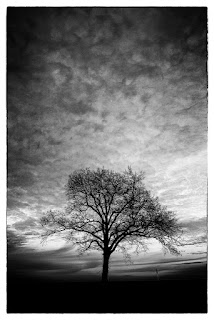 Sometimes though as a photographer, I need to find a more meaningful outlet, to allow creative instincts an opportunity to explore more thoroughly the photographic possibilities waiting for discovery. That is when I begin to look more closely at how I can best use this tool called a camera to capture the world around me in ways that is less an exact reproduction of what I see, and more of a creation of what I feel. Doing so helps to generate a greater creative depth to the images I want to capture.
Sometimes though as a photographer, I need to find a more meaningful outlet, to allow creative instincts an opportunity to explore more thoroughly the photographic possibilities waiting for discovery. That is when I begin to look more closely at how I can best use this tool called a camera to capture the world around me in ways that is less an exact reproduction of what I see, and more of a creation of what I feel. Doing so helps to generate a greater creative depth to the images I want to capture.How to do this is open to interpretation because everyone contributes their personal insights into what they want to accomplish. Even so there are some common ways to apply creative depth to your photography.
One of the best ways is to learn how to use off camera flash. There are literally hundreds of videos and articles out there explaining the X's and O's of the technique, so I will not go into that discussion here. Instead let's explore some of the reasons why this type of photography can add creative depth to you photographs. First of all, any photographer worth his or her salt knows that light is the most important element in a photograph.
Quality light can turn an ordinary object or situation into a work of art. Natural light of course is the most commonly used, however when you begin to use off camera flash you start to explore the realm of controlling the light. With off camera flash you can control the intensity, the angle or direction, the color, and timing of the moment. You can throw in a little fill light, or contribute the maximum amount of light required for a shoot. It can be used with people, places, or objects, and it can be combined with the natural ambient light, it can even be made to look like natural light. In short, you become the master of the lighting moment. This allows you to visualize how you want the image to appear, the shadows, the reflections, the back light, the boldness or subtleness of the light becomes yours to control.
Another way to add creative depth is to take your camera off AUTO or Program Mode and learn how to manipulate exposure. Use the +/- exposure compensation tool on your camera to add or remove light from your composition. This allows you to darken or lighten natural light and to apply a specific tonality to a specific area of your composition. Contrary to popular belief, you do not have to capture the world exactly the way you see it. You have the ability to interject your desire onto your photograph.
A third way is to use post production software to enhance your photographs. This is not cheating, this is simply allowing you to project your vision into your photograph to create from what might be an ordinary image, an image with power and eye catching ability. Ansel Adams, probably the most famous American photographer of all time, applied this same concept to his photographs except he did not use a computer (they didn't exist then), he did it in the darkroom using various kinds of print papers and print exposure techniques. There are countless how to videos and articles available on Photoshop and Light Room, so there really is no excuse for not learning how to do this. Even very basic, routine applications can improve almost any photograph and allow you to create your vision.
Although I attempt to capture in camera the image I visualize as closely as I can, almost all of my images undergo some post processing adjustments, however small, however slight they may actually be. One thing I have also learned over the years is to not be afraid to break the rules. Breaking the photographic rules will sometimes lead to an amazing revelation about photography and the results can be spectacular.
Adding a measure of creative depth to your photographs is a personal adventure almost anyone can learn how to do. It is more a matter of desiring to discover the limits of your own creative instincts and have a willingness to try something new. Much of it comes from within and all you are doing is applying your inner visions to the tools you have available.

















































